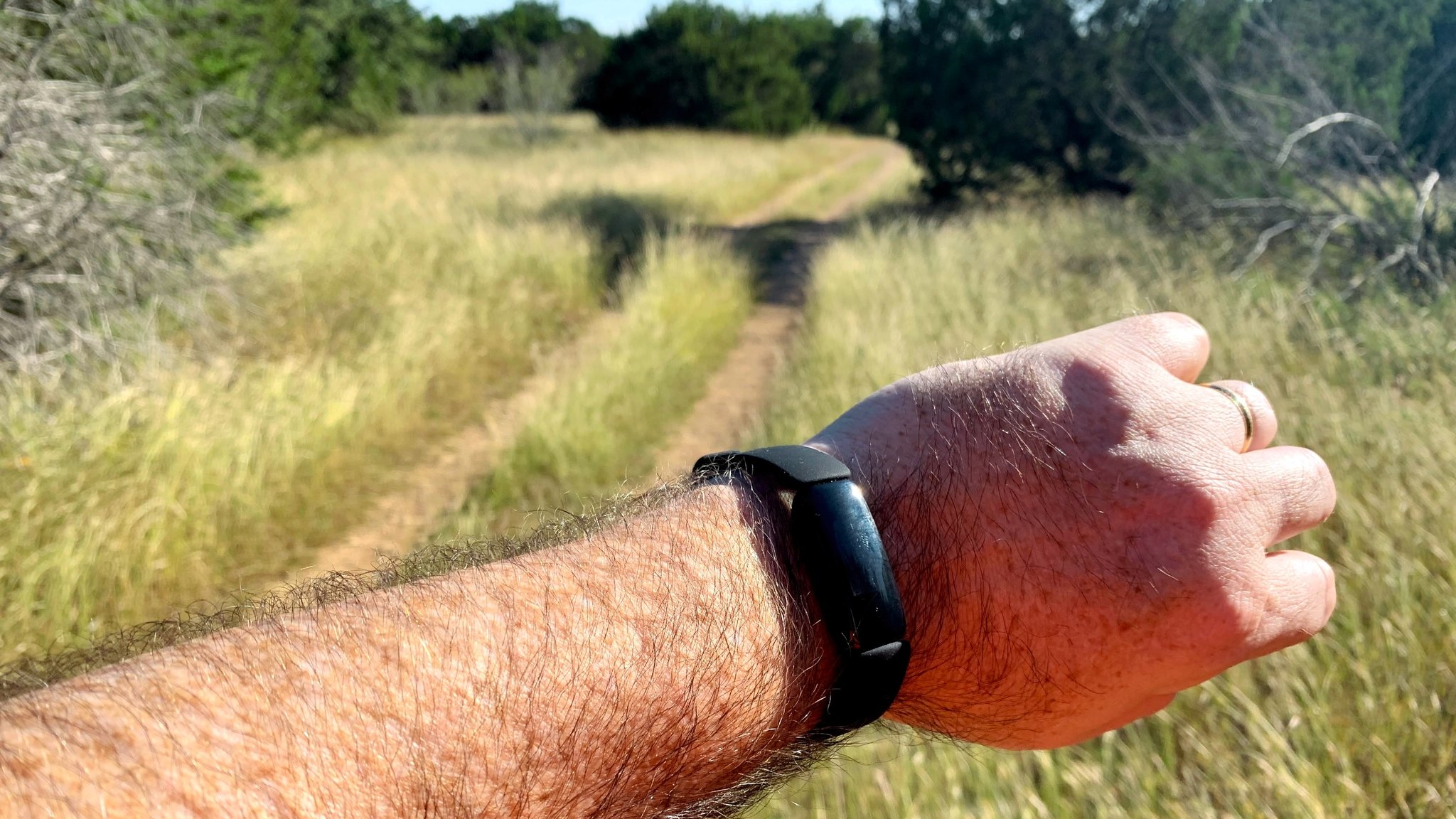Fitbit Inspire 2 vs. Samsung Galaxy Fit2: Which should you buy?
When it comes to fitness bands, the choice can be difficult.

Fitbit Inspire 2

Fitbit is constantly releasing new products and the Inspire 2 is one of the latest fitness trackers to hit the scene. You'll get Active Zone Minutes , 10 days of battery life, multiple exercise modes, and a slim and stylish design.
Fitbit Inspire 2
Reasons to buy
Reasons to avoid
Samsung Galaxy Fit2

If you want a budget-friendly fitness tracker, you'll love the Samsung Galaxy Fit2. You get a bright AMOLED display, 15 days of battery life, automatic fitness tracking, and 5 ATM water resistance. Unfortunately, you won't have a traditional heart-rate sensor or female health tracking.
Samsung Galaxy Fit2
Reasons to buy
Reasons to avoid
Fitbit Inspire 2 vs. Samsung Galaxy Fit2 Big differences
While the Fitbit Inspire 2 and the Samsung Galaxy Fit2 may look similar on the surface, there are some big differences between the two. If you're buying a fitness tracker for the first time and you want to be conservative with your spending, you may not mind the condensed approach the Samsung Galaxy Fit2 takes. However, if you want as many details as possible from your device, you'll likely prefer the Fitbit Inspire 2. It costs more, but it also has more to offer.
You get more details with the Fitbit Inspire 2

The Fitbit Inspire 2 may look identical to its predecessor, but there are some key differences. According to the company, the plastic case has been streamlined. You no longer have a side button, either. This time, you have a capacitive button that's easier to use. You get double the battery life with a total of 10 days on the Fitbit Inspire 2.
The design comes in a few different colors, including Lunar White, Desert Rose, and Black. If these don't appeal to you, you can always explore other options. There are plenty of third-party Fitbit Inspire 2 bands to choose from. However, if you don't want to wear your tracker on your wrist, you can wear it like a pedometer with a clip-on accessory.
| Header Cell - Column 0 | Fitbit Inspire 2 | Samsung Galaxy Fit2 |
|---|---|---|
| Display | Backlit OLED | AMOLED |
| Dimensions | 37.3 x 16.7 x 12.7mm | 46.6 x 18.6 x 11.1mm |
| Sensors | 3-axis accelerometer, optical heart rate sensor | Accelerometer, gyroscope, photoplethysmography |
| Water resistance | 5 ATM | 5 ATM + IP68 |
| Battery life | 10 days | 15 days |
| Automatic workout tracking | ✔️ | ✔️ |
| Sleep tracking | ✔️ | ✔️ |
| Smartphone notifications | ✔️ | ✔️ |
| Female health tracking | ✔️ | ❌ |
| Active Zone Minutes | ✔️ | ❌ |
Previously, the Fitbit Inspire was available in a standard version and a heart rate (HR) version. With the Fitbit Inspire 2, heart-rate monitoring is a standard feature. This means you don't have to pay more for access to heart-rate monitoring. If you want in-depth tracking, you'll be happy to know that you get a one-year free trial of Fitbit Premium when you purchase the Inspire 2. As a result, you get exclusive access to advanced insights and guided workouts to help you get your heart rate up so you can maximize your workouts.
Perhaps one of the most intriguing features is the addition of Active Zone Minutes. The Fitbit Inspire 2 will use its heart-rate sensor to let you know when you've reached your personalized heart rate zone, which is based on your age and fitness level. How does it work? During an optimal workout, you'll earn a score based on your fat burn, cardio, and heart rate zones. This feature is ideal for those who want to improve the efficiency of their workouts beyond basic step counting and calorie-burning goals. It's easy to see why the Inspire 2 is one of the best Fitbit devices out there.
Be an expert in 5 minutes
Get the latest news from Android Central, your trusted companion in the world of Android
While the Fitbit Inspire 2 is a mighty robust fitness tracker, you'll notice that a few things are missing. You won't have onboard GPS, which means you'll need to use connected GPS with your phone to track your route when going for a run, cycle, walk, or hike. You're also missing an altimeter, which means that your device won't track floors climbed.
Simple yet efficient tracking with the Samsung Galaxy Fit2

Upon comparing the Samsung Galaxy Fit2 to its predecessor, you'll find plenty of similarities. There are some key differences, though. For starters, the new Galaxy Fit2 is significantly cheaper than the original. While the original Galaxy Fit was designed to track your heart rate with a built-in sensor, the Fit2 does things differently.
Rather than having a traditional heart-rate monitor, the Galaxy Fit2 uses photoplethysmography, which is a more affordable technology that measures changes in the surface of your skin to detect blood volume changes. While you can get standard readings, the Fit2 won't give you real-time alerts for changes to your heart rate like the predecessor does.
The design and display are slightly different as well. The Samsung Galaxy Fit2 has a larger AMOLED screen at 1.1 inches compared to the previous 0.95-inch screen. The new edition's resolution is also higher. It's available in a standard black option or you can spice things up with the Scarlet variant.

The Fit2 has a 5 ATM + IP68 rating, so it's water-resistant up to 50 meters as well as dust resistant. As you may recall, the previous model had a MIL-STD-810G certification for military-grade durability, but this feature wasn't carried over to the Samsung Galaxy Fit2.
One of the major selling points of this fitness tracker is the improved battery life. Previously, the Fit offered a solid 7 days of battery life. Now, you can get up to 15 days on a single charge with the Galaxy Fit2. Those who are committed to tracking their health and fitness will appreciate how long this battery can last.
Aside from these differences, you can expect a lot more of the same on the Samsung Galaxy Fit2. It has automatic fitness tracking for a variety of workouts. Once you get started, it will automatically detect and start tracking the exercise for you. Otherwise, you can manually select your preferred workout from a list of activities. It will track your daily steps and calories burned with the option of recording your water and caffeine intake as well. The Galaxy Fit2 will monitor your stress levels and sleep patterns.
Samsung recently added a few new convenience features for the Galaxy Fit2, including the ability to use it as a Camera Controller with a compatible Galaxy device (with Android 7.0 Nougat or higher) along with a call decline feature if you're in a meeting or in the middle of an intense workout and don't want to pick up a call. Speaking of workouts, the newest addition to the line-up of exercises the Fit2 can track is jump roping.
Fitbit Inspire 2 vs. Samsung Galaxy Fit2 Which should you buy?

By now, you probably have a pretty good idea of which fitness tracker will best meet your needs. Both are excellent options, but your decision will come down to what you want from your device. If your main priorities include finding a tracker that is lightweight and comfortable, surprisingly affordable, and offers unbeatable battery life, you'll want to consider the Samsung Galaxy Fit2. It may not have female health tracking or a traditional heart-rate sensor, but it will get the job done.
Those who want to get a little deeper with their fitness tracker should consider buying the Fitbit Inspire 2 instead. You'll have activity and sleep tracking, heart-rate monitoring, female health tracking, and Active Zone Minutes. Don't forget that if you find yourself longing for more advanced features, like onboard GPS, blood oxygen monitoring, and mobile payments, you can always consider buying a smartwatch instead.

A better view of your health
While it's definitely not a smartwatch, the Fitbit Inspire 2 is designed to meet all of your health and fitness tracking needs without breaking the bank. You get various exercise modes, heart-rate monitoring, sleep tracking, stellar battery life, Active Zone Minutes, and so much more.

Keep it simple and cheap
While the Samsung Galaxy Fit2 does offer a screen that's larger with higher resolution, it cuts some key corners to keep costs down. Most importantly, you won't have a traditional heart-rate sensor. The improved design and extended battery life might be enough to win you over, though.
Courtney Lynch is a freelance writer at Android Central. She's obsessed with all things health, fitness, and music. At any given time, she can be found checking out the latest and greatest gadgets while simultaneously petting her dog and sipping iced coffee.

